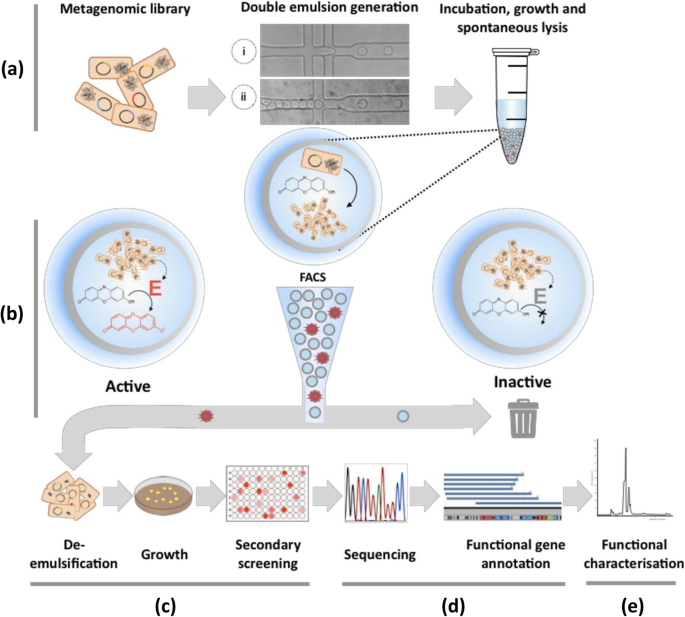The gut microbiota which is the collection of all microorganisms in the gastrointestinal tract is integral to host nutrition and digestion. From otherwise indigestible substrates, nutrients are extracted with the help of the gut microbiota. An example is the digestion of xyloglucans present in lettuce and onions. On the other hand, neurodegenerative, cardiovascular, and metabolic diseases have been linked to the imbalance of the gut microbiome which can also affect responses to therapies such as cancer treatment. The gut microbiota plays a role in drug metabolism; thus, unintended adverse reactions have a high chance to occur. For example, severe diarrhea can happen due to the reactivation of the metabolite of irinotecan, a chemotherapeutic drug for colorectal cancer. With the potential of the gut microbiome dysregulation to induce disease, the endeavor to control human health through microbiomes has become the next pursuit of biomedical research.
Microfluidics studies the behavior of fluids through micro-channels and facilitates the creation of microminiaturized devices containing chambers through which fluids are confined. It deals with very small amounts of fluids, down to femtoliters. Fluids behave differently on the micrometric scale. For example, the levels of viscosity and inertia in a micrometric scale support a laminar flow of the fluid than a turbulent one. These characteristics pave the way for the innovation and cost-effectiveness of this technology.
Figure 1. Application of microfluidics in microbiome research (Tauzin, 2020)
Microfluidics offers an innovative platform where huge numbers of discrete, micro-scale culture chambers can be synthesized to partition a mixture of the microbial population into single cells for subsequent functional assessment. Growing individual community members simultaneously under automated conditions allows a rapid and thorough study of a microbial community as a whole. Through the combination of fluorescence-activated cell sorting (FACS) technologies and microfluidics, it has become more attainable and cheaper to isolate and culture microbes based on the use and production of metabolites using reporter molecules to signal the presence of a particular enzyme product or metabolite. This method facilitates the assessment of diverse microbial populations for individuals generating metabolites or enzymes of interest or screening for mutations in known pathways.
CD Genomics has a wide selection of microfluidics chips for different applications in gut microbiome research such as drop-based, cell culture, organ-on-a-chip, cell/ particle sorting, micromixers, and microvalves. This technology decreases sample and reagent consumptions, shorten experimentation time, and reduced costs.
The comparison of traditional methods versus microfluidic emulsions
| Traditional Method | Microfluidic Droplets | |
| Total reactions | 5×107 | 5×107 |
| Reaction volume | 100 μL | 6 pL |
| Total volume | 5,000 L | 150 μL |
| Reactions/day | 73,000 | 1×108 |
| Total time | 2 years | 7 hours |
| Number of plates/devices | 260,000 | 2 |
| Cost | High | Low |
CD Genomics is one of the prominent players in the international microfluidic and sequencing industry producing new breakthrough technologies and cutting-edge materials. All product applications for microfluidics and amplicon sequencing possible can be found on their website. Please feel free to contact us with your inquiries and concerns.
Reference
1. Agresti J. J. et al,Ultrahigh-throughput screening in drop-based microfluidics for directed evolution, PNAS, 2010, 107:4004-4009. 2. Arnold, J. W., Roach, J., Azcarate-Peril, M. A. Emerging Technologies for Gut Microbiome Research. Trends in microbiology, 2016, 24(11), 887–901.
3. Shreiner, A. B., Kao, J. Y., Young, V. B. The gut microbiome in health and in disease. Current opinion in gastroenterology, 2015, 31(1), 69–75.
4. Tauzin, A.S., Pereira, M.R., Van Vliet, L.D. et al. Investigating host-microbiome interactions by droplet based microfluidics. Microbiome. 2020, 8, 141.
*For Research Use Only. Not for use in diagnostic procedures.


